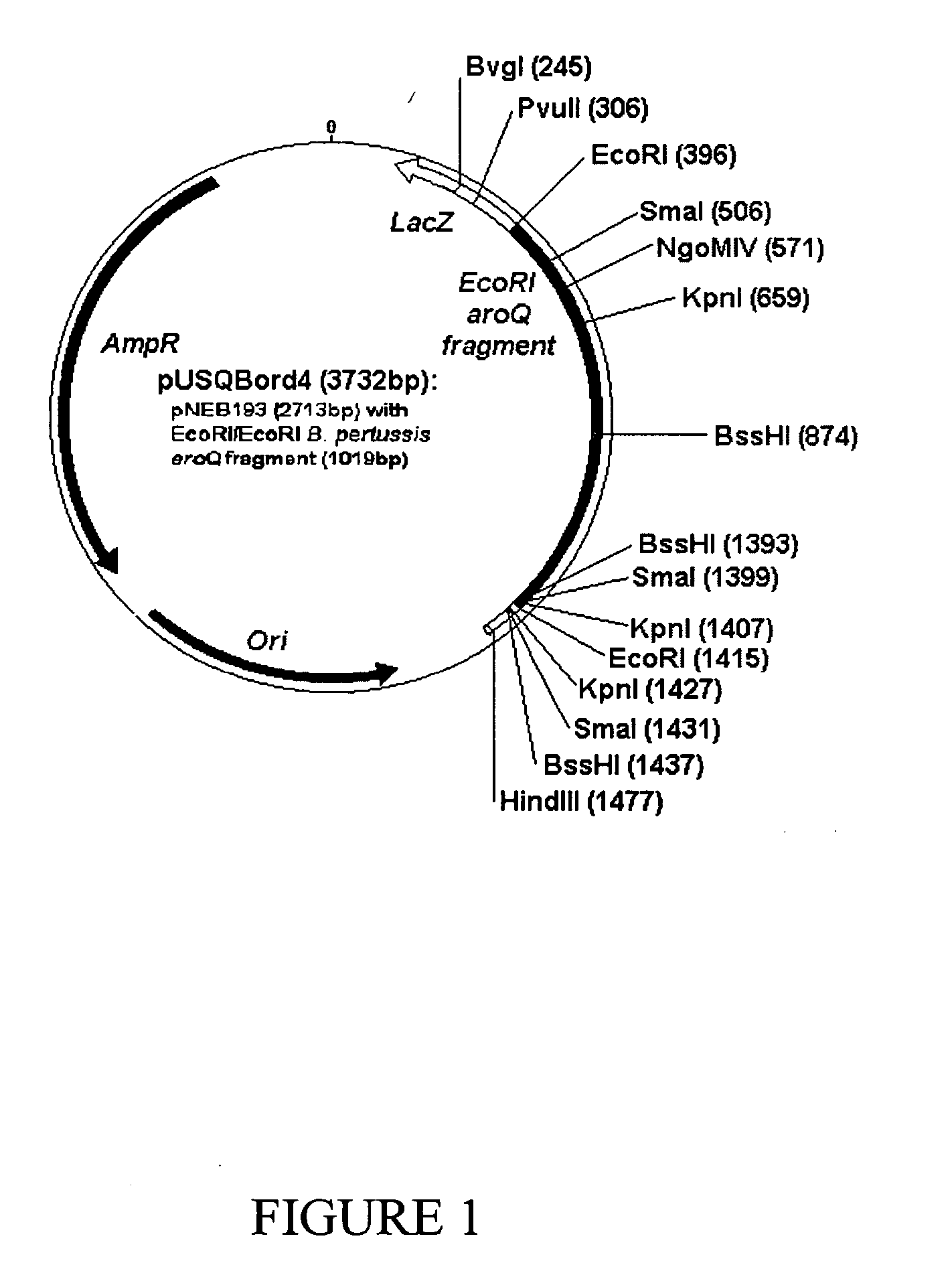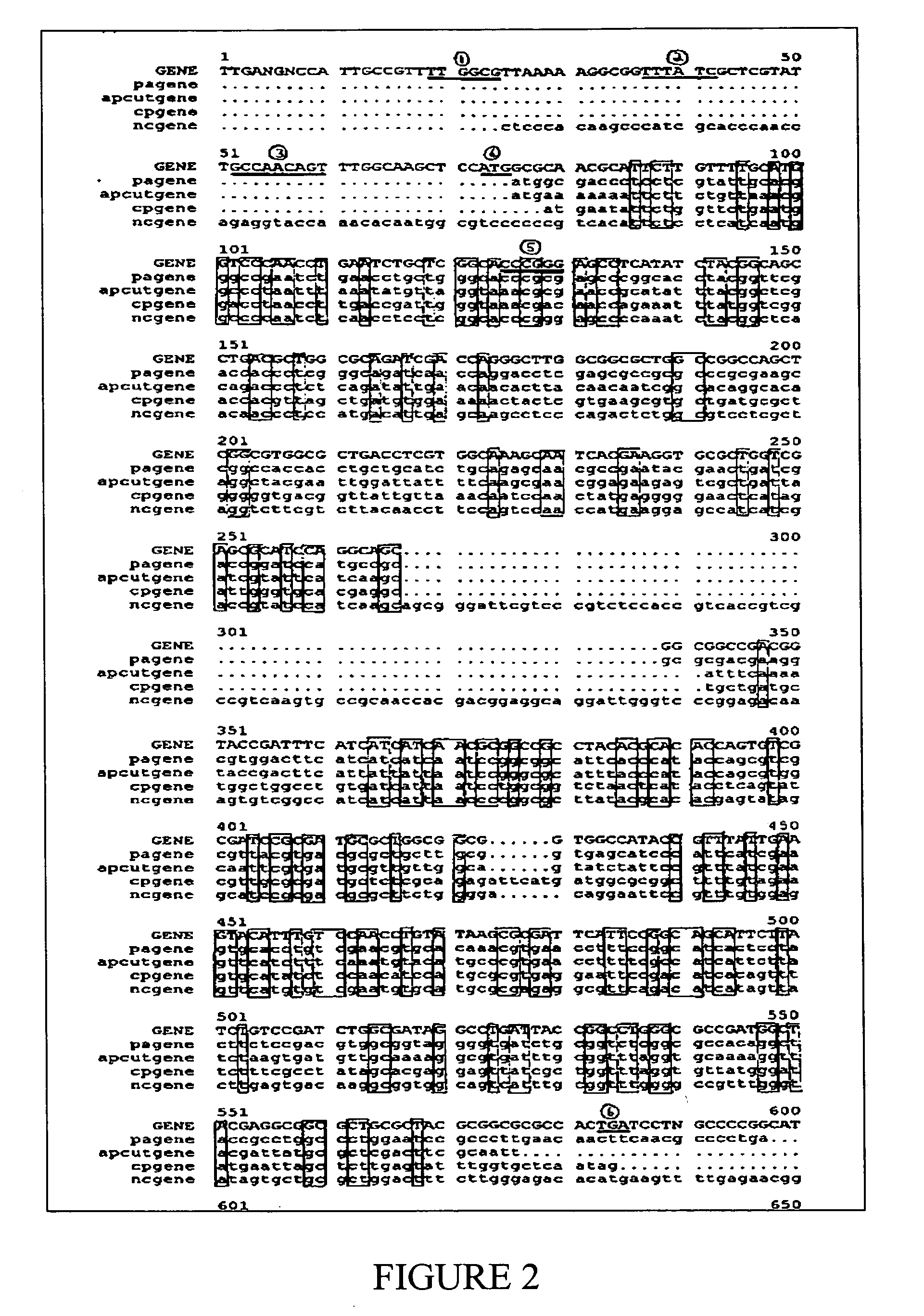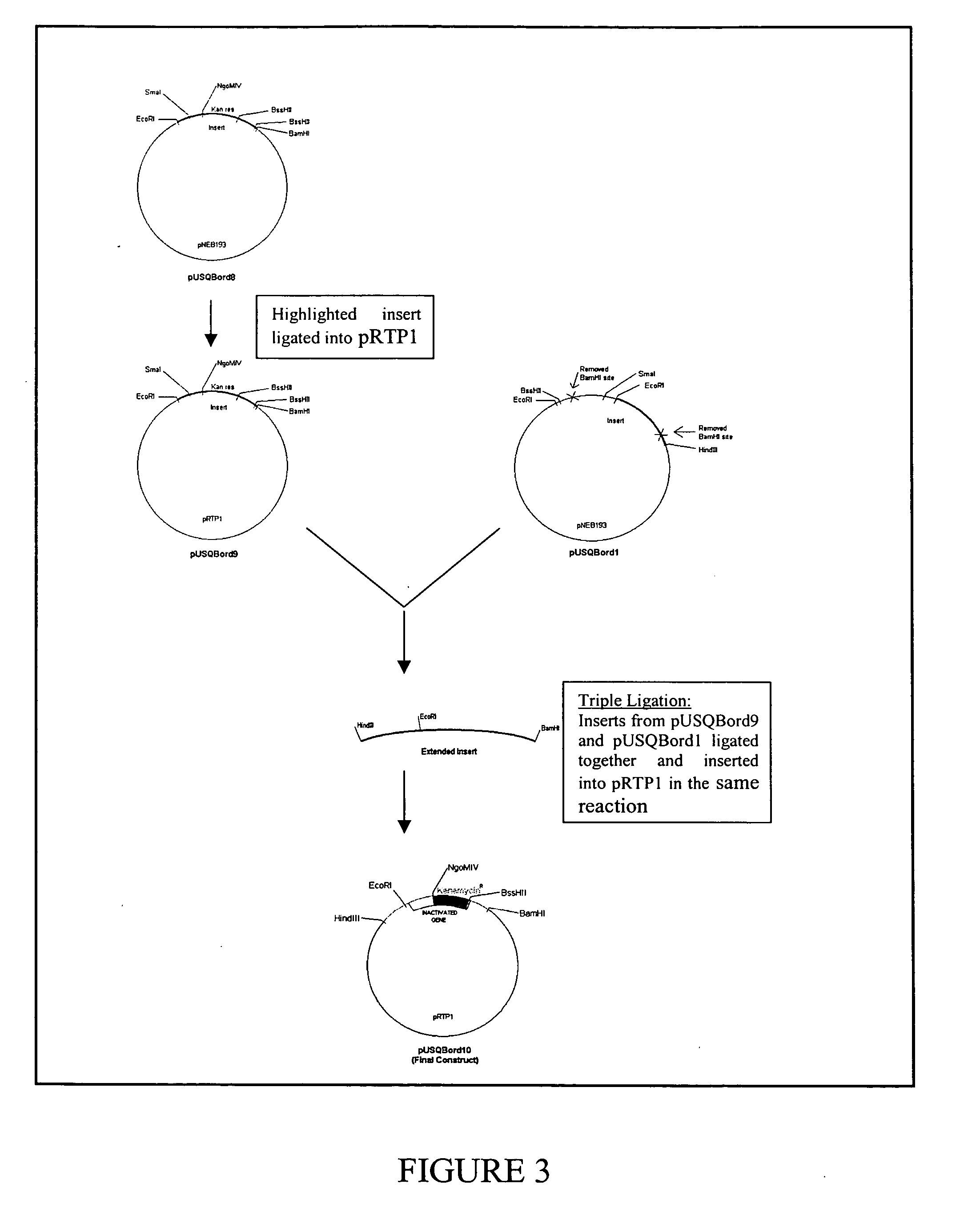Defective entities and uses therefor
a technology of dehydroquinase and defects, which is applied in the field of attenuated bordetella strains, can solve the problems of unsuitable recombinant strains for vaccines, inability of genetically modified bordetella strains to produce functional 3-dehydroquinase or detectable levels of dehydroquinas
- Summary
- Abstract
- Description
- Claims
- Application Information
AI Technical Summary
Benefits of technology
Problems solved by technology
Method used
Image
Examples
example 1
Bacterial Strains, Plasmids, Media and Growth Conditions
[0203] A complete list of bacterial strains and plasmids used in this study is provided in Table 1. E. coli strains were routinely cultured in LB broth or on LB agar (Oxoid) overnight at 37° C. B. pertussis was routinely grown in a modified version of Verwey liquid medium (Farrell 2000) or Stainer Scholte medium (Stainer & Scholte 1971) and on Bordet-Gengou (BG) agar (Becton Dickinson) containing 15% sterile-defibrinated sheep blood for 2-3 days at 35-37° C. Cohen-Wheeler (CW) agar (Cohen & Wheeler 1946) containing 10% sterile-defibrinated sheep blood and 10 mM MgCl2 was used for B. pertussis growth during conjugation experiments.
TABLE 1Bacterial Strains and plasmidsStrainsRelevant propertiesSource or referenceBacteriaSM10λpirMobilising strain,Roberts et al. (1990)recA::RP4-2-Tc::MuJM101Cloning hostDH5αCloning host583 / 90Cloning host, aroDmutantATCC9340vir+Rosetti 1997BP304Tohama I spontaneousmutant, SmR, vir+Tohama Ivir+195...
example 2
Preparation and Manipulation of DNA
[0206] Extraction of plasmid DNA from E. coli strains or agarose gels was accomplished using a Prep-A-Gene DNA purification Kit (BioRad). Genomic DNA (gDNA) was purified from B. pertussis using a BioRad Genomic DNA Isolation Kit. All DNA manipulations were carried out using the protocols described elsewhere (Sambrook et al., 1989). Restriction endonucleases, T4 DNA ligase and alkaline phosphatase were purchased from either MBI Fermentas, New England Biolabs or Amersham Pharmacia Biotech and were used according to the manufacturers recommendations. The PCR kit used was purchased from Fisher Biotec.
example 3
Characterisation of the aroQ Gene
[0207] To detect whether B. pertussis possessed the aroD gene from the aromatic biosynthetic pathway, its genomic library was electroporated into the aroD mutant, E. coli 583 / 90. During these attempts an isolate was found which restored the mutant to wild type E. coli and allowed it to grow on media lacking aromatic compounds. It was assumed that the plasmid rescuing the isolate contained the aroD gene.
[0208] Restriction digestion and electrophoresis were used to determine an insert size of 1.5 Kb. To facilitate sequencing, the plasmid was further digested to produce a smaller 1 Kb fragment. This plasmid was subsequently named pUSQBord4 (FIG. 1). Analysis of the pUSQBord4 insert sequence revealed that the approximate 500 bp gene was not similar to the consensus sequence of the aroD gene. A BLAST search using ANGIS showed that B. pertussis possessed the aroQ gene similar to the catabolic pathway of the fungus, Aspergillus nidulans. The aroQ genes f...
PUM
| Property | Measurement | Unit |
|---|---|---|
| time | aaaaa | aaaaa |
| Tm | aaaaa | aaaaa |
| Tm | aaaaa | aaaaa |
Abstract
Description
Claims
Application Information
 Login to View More
Login to View More - R&D
- Intellectual Property
- Life Sciences
- Materials
- Tech Scout
- Unparalleled Data Quality
- Higher Quality Content
- 60% Fewer Hallucinations
Browse by: Latest US Patents, China's latest patents, Technical Efficacy Thesaurus, Application Domain, Technology Topic, Popular Technical Reports.
© 2025 PatSnap. All rights reserved.Legal|Privacy policy|Modern Slavery Act Transparency Statement|Sitemap|About US| Contact US: help@patsnap.com



